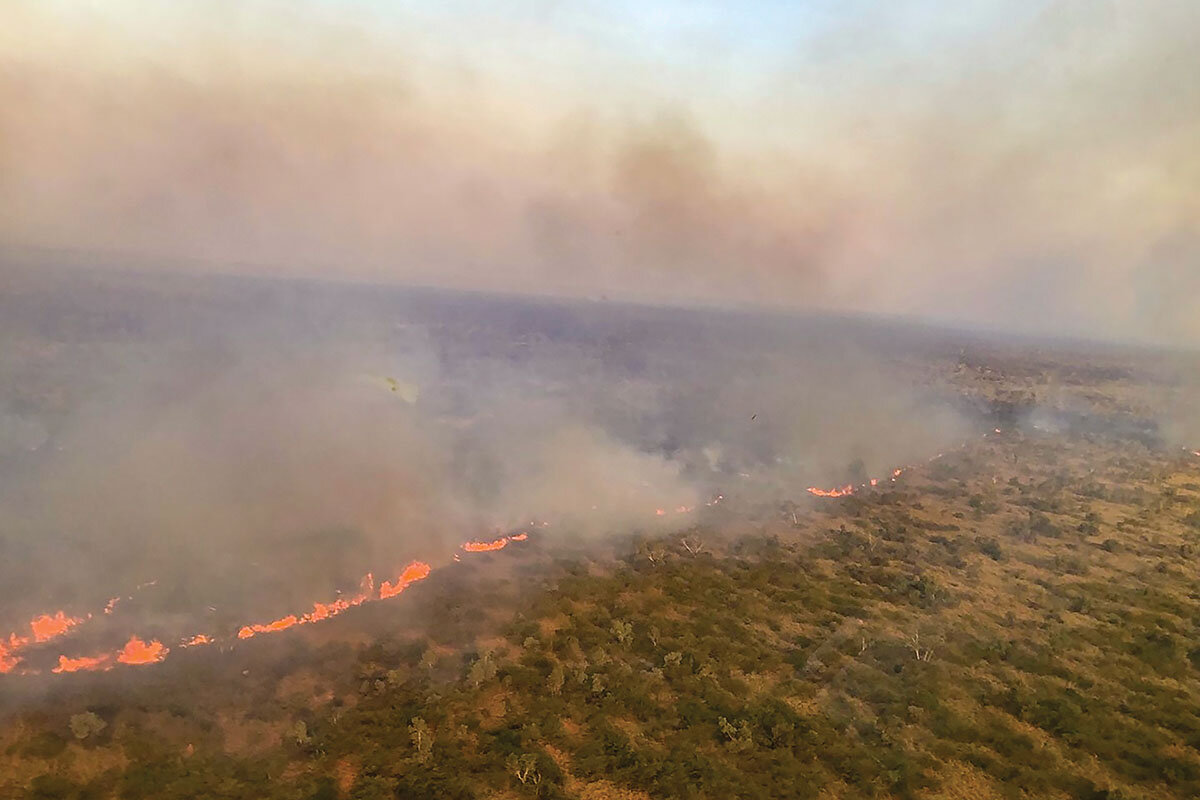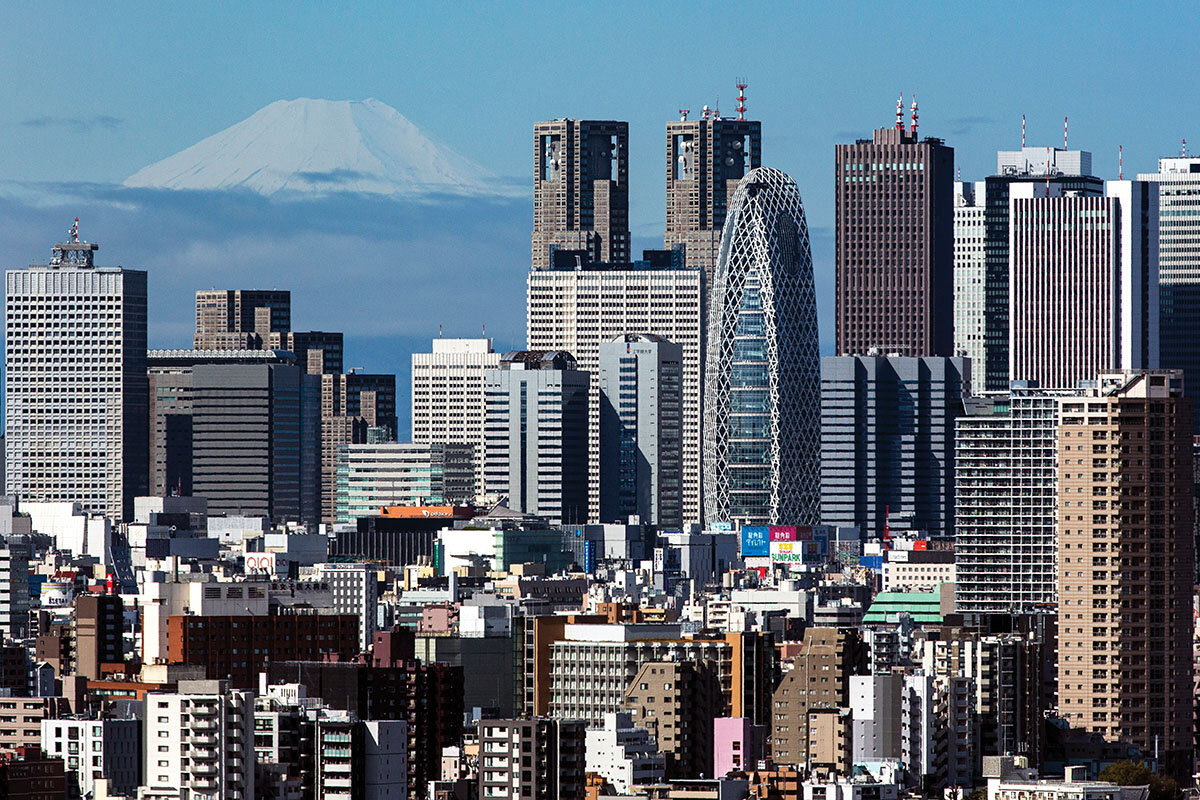The power of togetherness: Sharing knowledge, and a meal
Loading...
1. United States
Scientists synthesized speech and facial expressions from brain signals for the first time, creating a speaking avatar for a woman with paralysis. The brain-computer interface enabled Ann Johnson to communicate five times faster than her current device allows.
On the surface of Mrs. Johnson’s brain, the team placed a thin rectangle of 253 electrodes, which interpreted electrical impulses that usually would go to the larynx, face, tongue, and jaw. While her attempts at speech do not result in sound, Mrs. Johnson’s weeks of repeating a small vocabulary taught the artificial intelligence deep-learning models her brain patterns along with the 39 phonemes in English – the individual units of sound rather than whole words. An algorithm used a recording of Mrs. Johnson speaking at her wedding so that the avatar mimics her voice from before the paralysis.
Why We Wrote This
A story focused onIn our progress roundup, one Paris neighborhood makes a big city smaller with a dinner for hundreds. And in Senegal, farmers don’t need to read to gain knowledge from advisers and peers – they use their cellphones.
The system accurately deciphered every word of about half of Mrs. Johnson’s sentences, and people on a crowdsourcing platform correctly interpreted the digital avatar’s facial expressions most of the time.
“It let me feel like I was a whole person again,” Mrs. Johnson wrote.
Researchers hope the breakthrough could lead to a widely available wireless version of the technology in the next decade.
Sources: University of California, San Francisco; Nature; The New York Times
2. Senegal
Senegalese farmers are using WhatsApp voice notes for vital information that is improving the way they work. Nearly half of Senegal’s population cannot read or write, owing to educational inequities and the primarily oral nature of local languages. A 15,000-person network of more than 30 WhatsApp groups is keeping farmers connected with agriculture advisers, researchers, local nonprofits, and each other.
Last year, as the war in Ukraine caused fertilizer prices to skyrocket, threatening the country’s already tenuous food supply, WhatsApp allowed farmers to discuss cost-friendly alternatives. Senegal’s agency for agriculture used the app to share detailed messages on techniques for a homemade fertilizer that is cheaper and faster, and yields harvest increases of 30%, some farmers reported. The groups have also helped users overcome connectivity issues since they can send voice notes for the recipient to listen to when they gain reception.
“I want to open myself to the world, I want to learn so many things,” said fruit farmer Ousmane Coly. “We all speak Wolof, Diola, and some Manding that are difficult to write. Voice notes let us carry on the dialogue.”
Source: Rest of World
3. France
The Republic of Super Neighbors is re-imagining urban life in Paris. In the 14th arrondissement, some 1,000 to 2,000 Parisians have forged an inclusive community that holds cultural exchanges, weekly brunches, and an annual banquet – where hundreds of residents eat together at a long table in the middle of Rue de l’Aude, a central street. The group, which started in 2017, is part of a broader movement to refocus city life through a lens of neighborliness, mutual aid, and close interaction.
The République des Hyper Voisins seeks to improve health, mobility, public spaces, and the environment in its neighborhood on the Seine’s Left Bank. In one project, the city of Paris is helping fund a new health clinic with a staff of 10. And the Super Neighbors collaborated with a nonprofit to install bins and annually collect 60 tons of organic waste for compost.
A qualitative study of the Super Neighbors and of two other volunteer initiatives in Paris during the pandemic recommended more such programs to strengthen communities.
“Conviviality is not just a good feeling,” said Patrick Bernard, a resident who conceived the Super Neighbors group. “It can become a powerful asset, an essential economic and social agent in the construction of tomorrow’s cities.”
Sources: The Guardian, The New York Times, La 27e Région-Camille Arnodin
4. Australia
In an unprecedented effort, Indigenous rangers are using controlled, “right-way” burns across thousands of square miles of desert in central and western Australia. After La Niña rains encouraged the growth of invasive buffel grass, officials warned that up to 80% of the Northern Territory could burn this coming season.
Groups from a dozen Indigenous Protected Areas are working primarily from helicopters, dropping incendiary devices to start controlled burns over difficult-to-access arid lands. Because dry areas tend to have few trees, fires stay close to the ground and remain controlled. For areas near cultural sites and threatened species’ habitats, rangers use drip torches to start fires on the ground.
Roughly 60% of Australia’s desert mammal species have gone extinct in the last 250 years, owing partially to changes in fire patterns. Research shows that Indigenous right-way fire practices, which produce a patchwork of vegetation at diverse stages of fire recovery, can return the desert to a pre-colonial landscape – potentially increasing biodiversity.
Sources: The Conversation, Journal of Environmental Management
5. Japan
Japan, one of the most seismically active countries in the world, has invested heavily in preparation for its next big earthquake. With an estimated 70% chance of a magnitude 7 or higher quake striking the capital in the next 30 years, the government has poured funds into planning and technology to protect 14 million residents in the capital alone.
Since the Great Kantō quake a century ago, Japan has collected vast sums of data and maintains a dense seismograph network with early warning systems. About 92% of Tokyo’s homes meet modern seismic building codes, and developers and construction companies incorporate protective measures that go beyond what’s required.
The 1923 Kantō quake killed more than 100,000 people, and fires caused 90% of casualties. But today, wider streets stop flames from spreading, evacuation routes are clearly marked, and builders use less flammable materials. Civic groups have also expanded their reach, holding earthquake drills and helping communities prepare.
Tokyo recently allocated 6 trillion yen ($41 billion) over 10 years for a detailed disaster preparedness Tokyo Resilience Project, which incorporates lessons learned after the 2011 tsunami.
Source: The Economist








